Come join us now, and enjoy playing your beloved music and browse through great scores of every level and styles!
Can’t find the songbook you’re looking for? Please, email us at: sheetmusiclibrarypdf@gmail.com We’d like to help you!
Table of Contents
William Grant Still: Three Visions (Suite for piano solo)
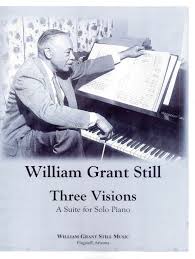
Best Sheet Music download from our Library.
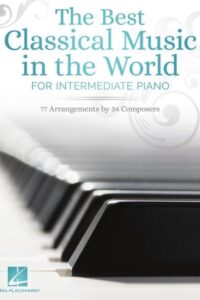
Please, subscribe to our Library.
If you are already a subscriber, please, check our NEW SCORES’ page every month for new sheet music. THANK YOU!
0:00 – Dark Horseman 1:30 – Summerland 6:00 – Radiant pinnacle
Browse in the Library:
Or browse in the categories menus & download the Library Catalog PDF:
William Grant Still
William Grant Still (1895 – 1978) was an American composer, arranger, conductor, and multi-instrumentalist, often called “the Dean of African American composers.” He was the first African American to have a symphony performed by a major orchestra in the United States, the first to conduct a major symphony orchestra, and the first to have an opera produced by a major opera company.

Early Life and Education
- Born on May 11, 1895, in Woodville, Mississippi, and raised in Little Rock, Arkansas.
- His father died when he was an infant, and his mother, a teacher, encouraged his musical interests.
- Studied at Wilberforce University, where he initially pursued medicine but shifted to music.
- Later trained at the Oberlin Conservatory of Music, then studied composition with George Whitefield Chadwick and later with avant-garde composer Edgard Varèse in New York.
Career and Achievements
- Worked as an arranger for popular and jazz bands in New York, including for W. C. Handy and Paul Whiteman.
- Became involved with the Harlem Renaissance, blending African American musical traditions with classical forms.
- His Symphony No. 1 “Afro-American” (1930) was the first symphony by an African American to be performed by a major U.S. orchestra (Rochester Philharmonic, 1931).
- Conducted the Los Angeles Philharmonic at the Hollywood Bowl in 1936, making him the first African American to lead a major orchestra in the U.S.
- His opera Troubled Island (1939, libretto by Langston Hughes and Verna Arvey) was the first by an African American staged by a major company (New York City Opera, 1949).
Musical Style
- Fused classical European traditions with African American idioms: blues, spirituals, jazz, and folk tunes.
- Emphasized lyricism, accessibility, and cultural expression rather than strict modernist abstraction.
- Advocated for a distinctly American classical music rooted in Black cultural traditions.
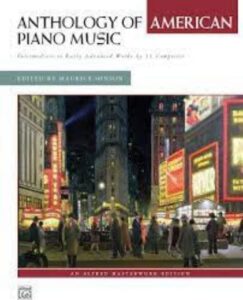
Notable Works
- Symphonies: Afro-American Symphony (No. 1), Song of a New Race (No. 2), The Sunday Symphony (No. 3), Autochthonous Symphony (No. 4), Western Hemisphere Symphony (No. 5).
- Operas: Troubled Island, A Bayou Legend, Highway 1, U.S.A.
- Chamber & Vocal Music: Lyric Quartette, Danzas de Panama, many art songs.
- Also wrote for radio, film, and popular ensembles.
Legacy
- Broke multiple racial barriers in American classical music.
- Opened doors for later generations of African American composers and performers.
- His works are increasingly studied and performed, recognized as cornerstones of 20th-century American music.
- Died in Los Angeles, California, on December 3, 1978.
William Grant Still’s music stands out for celebrating African American heritage within the classical tradition, offering a unique and dignified voice at a time when systemic racism excluded many Black composers from mainstream recognition.
Three Visions (1935) is one of William Grant Still’s most powerful works for solo piano. It is a short suite in three movements, deeply symbolic, written during the Harlem Renaissance period when Still was developing a distinctive African American voice within classical idioms. The suite is often regarded as a spiritual and philosophical statement on the human soul’s journey after death.
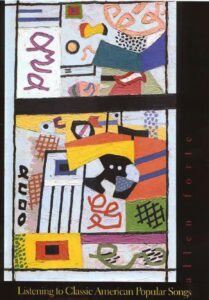
Three Visions (1935) Overview and Musical Analysis
- Title: Three Visions (for solo piano)
- Date: 1935
- Movements:
- Dark Horsemen
- Summerland
- Radiant Pinnacle
- Theme: The cycle represents the progression of the human soul: confrontation with death, passage to spiritual peace, and ultimate ascension.
1. Dark Horsemen
- Character: Turbulent, dissonant, and rhythmically urgent.
- Musical features:
- Rapid ostinati and syncopations drive the texture.
- Dense chords, sharp dynamics, and angular melodies suggest violence and inevitability — the soul’s confrontation with mortality.
- Harmonic language: rooted in tonal centers but heavily chromatic, with influences from early modernism (Still studied with Varèse).
- Strong percussive writing evokes imagery of galloping horses (possibly a reference to the biblical Four Horsemen of the Apocalypse).
Interpretation: This movement symbolizes the struggle and chaos of death, the breaking away of the soul from earthly ties.
2. Summerland
- Character: Gentle, lyrical, and serene — the most frequently performed movement.
- Musical features:
- Lush, hymn-like melody in the middle register, often played with a singing legato.
- Rich Romantic harmonies, influenced by Chopin and Debussy but colored with blues-inflected lines.
- Transparent texture, long sustained chords, and rubato create a meditative atmosphere.
- Tonal stability (often interpreted in D♭ major) provides calmness.
Interpretation: Summerland represents the spiritual paradise the soul reaches after death — peaceful rest and eternal beauty.
This movement is sometimes performed alone as an independent concert piece or even arranged for orchestra.
3. Radiant Pinnacle
- Character: Triumphant, luminous, and ascending.
- Musical features:
- Energetic rhythms, sweeping arpeggios, and brighter harmonies than in the previous movements.
- Builds momentum with a sense of striving upward, often through sequences and rising melodic gestures.
- Tonal clarity, major sonorities, and climactic chords express transcendence.
- Harmonically more consonant than Dark Horsemen, but with modern chromatic coloring.
Interpretation: This final movement depicts the soul’s union with the divine, ascending to its highest state — ultimate illumination.
Stylistic Significance
- Still fuses African American spiritual aesthetics (hymn-like phrasing, blues shadings, and rhythmic vitality) with Romantic piano traditions and 20th-century modernism.
- The three movements form a narrative arc: struggle → peace → transcendence.
- Philosophically, the suite echoes African American religious culture, yet framed in a universal human story of death and renewal.
In short, Three Visions is both a musical poem and a spiritual statement. It demonstrates Still’s ability to merge classical craft with African American cultural expression, creating a deeply humanistic and uplifting work.
Perfect — let’s dive into a harmonic walkthrough of “Summerland” from William Grant Still’s Three Visions. Since this movement is often performed alone and is the most tonal of the suite, it lends itself beautifully to harmonic analysis.
(Note: Exact bar numbers vary depending on the edition, but I’ll give the progression in sections. The piece is most often read in D♭ major.)
“Summerland” — Harmonic Analysis
Opening (mm. 1–4)
- Key: D♭ major
- Chords:
- I (D♭ major) — tonic established gently, hymn-like.
- IV (G♭ major) with added 6th/9th sonorities.
- I again, enriched by suspensions and inner voice motion.
The effect is calm, hymn-like stability. Still avoids strong cadences, instead sustaining a floating atmosphere.
First Phrase (mm. 5–12)
- Melody enters in the middle register, supported by soft chords.
- Progression:
- I → V/vi → vi (B♭ minor) → ii (E♭ minor) → V (A♭ major).
- Resolves back to I (D♭).
This is a classical diatonic motion but with added-color tones (6ths, 9ths), giving a Debussy-like lushness. The move to vi and ii emphasizes a spiritual, tender quality rather than dramatic tension.
Second Phrase (mm. 13–20)
- More chromaticism enters.
- Chords:
- I → ♭VII (C♭ major) → IV (G♭) → ii7 (E♭m7) → V7 (A♭7).
- Resolution: cadences softly back to I.
The use of ♭VII (C♭) is borrowed from folk/blues progressions. It enriches the harmony with a distinctly African American inflection inside an otherwise classical framework.
Climactic Middle Section (mm. 21–32)
- Harmonically more adventurous:
- Alternation between vi (B♭ minor) and IV (G♭ major).
- Sequence through chromatic mediants: I (D♭) → iii (F minor) → V/ii (F7) → ii (E♭ minor).
- Approaches V7 (A♭7) with stronger rhythm and dynamics.
The chromatic mediant shifts (D♭ → Fm → A♭) give the impression of warmth and expansion — the soul ascending in vision.
Return (mm. 33–40)
- Recapitulation of the opening theme.
- Progression largely tonic (I), with embellishments:
- I → IV → ii7 → V7 → I.
- Still decorates the chords with added 9ths and 11ths, keeping the sound lush and modern.
Coda (mm. 41–end)
- Gentle descent, cadencing finally on a pure I (D♭ major).
- Chords sustain with long fermatas, creating timeless stillness.
The coda is essentially a plagal cadence (IV → I), which resonates with the feeling of a hymn or spiritual.
Summary of Harmonic Style in “Summerland”
- Foundation: Firmly tonal, centered in D♭ major.
- Coloration: Use of added 6ths, 9ths, 11ths for lush textures.
- African American inflection:
- Borrowed ♭VII (C♭ major) → I.
- Blues-like coloring of melodic lines (flattened 3rd, 7th inflections).
- Narrative arc: Gentle tonic → chromatic expansion → luminous return.
- Effect: A meditative vision of paradise — serenity, lyricism, timeless rest.
So, harmonically, Summerland balances European Romanticism (Chopin, Debussy) with African American idioms (bluesy modal borrowing, plagal cadences). This is why it feels both “classical” and “soulful.”
| Artist or Composer / Score name | Cover | List of Contents |
|---|---|---|
| Piano Anthology The Faber Music Piano Anthology Best loved original repertoire for solo piano |
 |
Piano Anthology The Faber Music Piano Anthology Best loved original repertoire for solo piano |
| Piano Anthology Vol 1 |
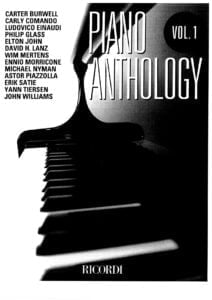 |
Piano Anthology Vol 1 |
| Piano Anthology Volume 2 |
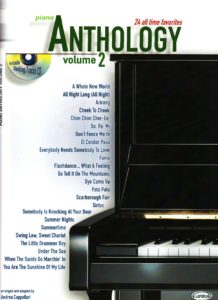 |
Piano anthology 2 |
| Piano Bar Collection Mini Series |
 |
Piano Bar Collection Mini |
| Piano Bar Favorites (Piano Vocal guitar songbook) |
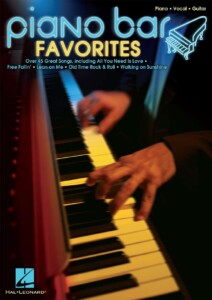 |
Piano Bar Favorites (Piano Vocal guitar songbook) |
| Piano Basico De Bastien Piano Elemental A Para El Pequeno Principiante |
 |
|
| Piano Basico de Bastien Piano Elemental A y B Para El Pequeño Principiante (Spanish-Español) |
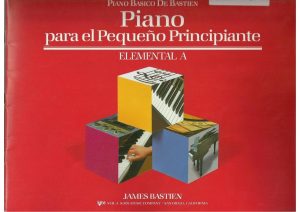 |
|
| Piano Basico De Bastien Piano Elemental B Para El Pequeno Principiante |
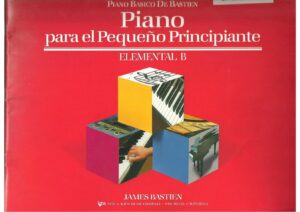 |
|
| Piano Básico Nivel 1 (Bastien) Español (Spanish) |
 |
Piano Básico Nivel 1 (Bastien) Español (Spanish) |
| Piano Básico Nivel 2 (Bastien) Español (Spanish) |
 |
|
| Piano Básico Nivel 3 (Bastien) Español (Spanish) |
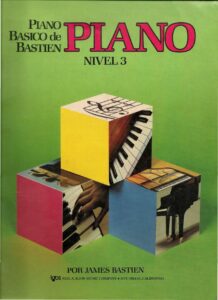 |
|
| Piano Básico Nivel 4 (Bastien) Español (Spanish) |
 |
|
| Piano Boogie René Favre |
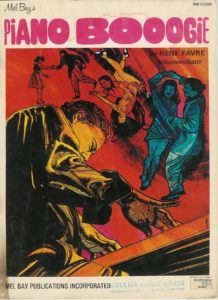 |
|
| Piano Book Pop Movies Hits (Mike Emerson) |
 |
Piano Book Pop Movies Hits Piano Music – Piano Books – Piano Sheet Music – Keyboard Piano Book – Music Piano – Sheet Music… (Mike Emerson) |
| Piano Calm 15 Reflective Solos Composed By Phillip Keveren |
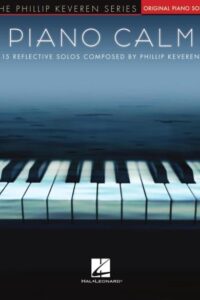 |
Piano Calm 15 Reflective Solos Composed By Phillip Keveren |
| Piano Chord Notation Dictionary |
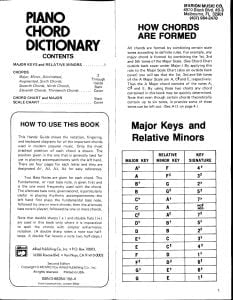 |
|
| Piano Chords, Mel Bay Deluxe Encyclopedia Of – A Complete Study Of Chords And How To Use Them |
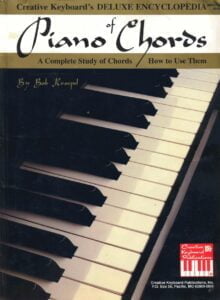 |
Piano Chords, Mel Bay Deluxe Encyclopedia Of – A Complete Study Of Chords And How To Use Them |
| Piano Classical Method Duet Collection 1 Hans Günther Heumann |
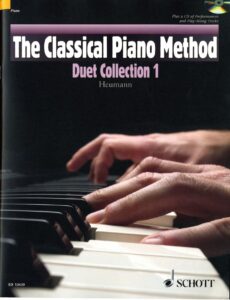 |
Piano Classical Method Duet Collection 1 Hans Günther Heumann |
| Piano Classics The USBORNE – Book of – Over 80 easy pieces to play |
 |
Piano Classics, The USBORNE – Book of – Over 80 easy pieces to play |
| Piano Classics Favorite Pieces from Bach to Satie PDF |
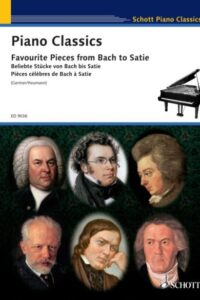 |
Piano Classics Favorite Pieces from Bach to Satie PDF Contents |
| Piano Classics World Masterpieces Piano Sheet Music Book The Most Famous Classical Piano Songs |
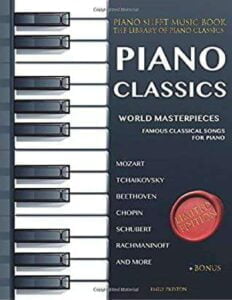 |
Piano Classics World Masterpieces Piano Sheet Music Book The Most Famous Classical Piano Songs Mozar |
| Piano Course Book 1 by Leila Fletcher |
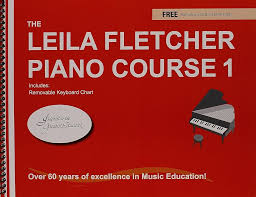 |
|
| Piano Course For Adult Learning | Piano Course For Adult Learning | |
| Piano Duets For Children |
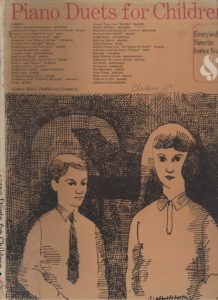 |
Piano Duets For Children |
| Piano Exercises Books (Bartok-Hanon-Czerny-Pischna, etc.) | Piano Exercices | |
| Piano For Beginners 6th Ed |
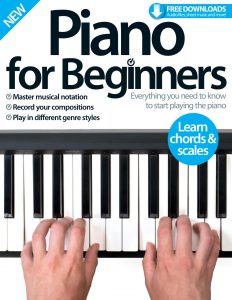 |
Piano For Beginners 6th Ed |
| Piano For Busy Teens Book 1 (early intermediate to intermediate) |
 |
|
| Piano for Dummies, 2nd Edition – Book with AUDIO MP3 | Piano for dummies | |
| Piano Grade 1 Trinity Guilhall Pieces & Exercises for examinations TCL |
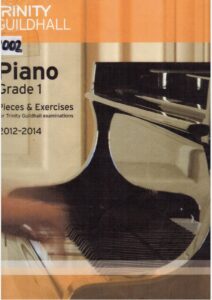 |
|
| Piano Grade 2 Trinity Guilhall Pieces & Exercises for examinations TCL |
 |
|
| Piano Grade 3 Trinity Guilhall Pieces & Exercises for examinations TCL |
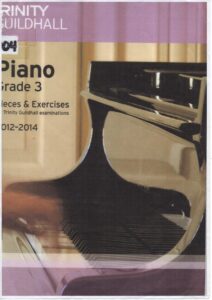 |
|
| Piano Grade 4 Trinity College London Pieces & Exercises for examinations TCL |
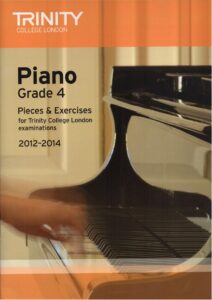 |
|
| Piano Guided Sight-Reading (By Leonhard Deutsch) (1950) |
 |
|
| Piano Heroes 15 songs von Jazz bis Pop Hans Gunter Heumann Piano Heroes |
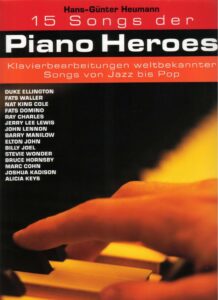 |
Piano Heroes 15 songs von Jazz bis Pop Hans Gunter Heumann Piano Heroes |
| Piano Hymns Of Faith Marilyn White |
 |
Piano Hymns Of Faith Marilyn White |
| Piano Improvisation On A George Gershwin Theme (Musescore File).mscz | ||
| Piano Jazz Blues Annick Chartreux Pièces Faciles Pour Piano Livre 1 |
 |
|
| Piano Jazz Blues Annick Chartreux Pieces Faciles Pour Piano Livre 2 |
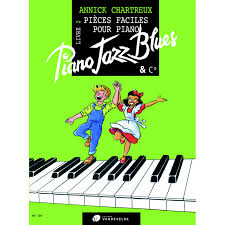 |
|
| Piano Jazz Blues Annick Chartreux Pieces Faciles Pour Piano Livre 3 |
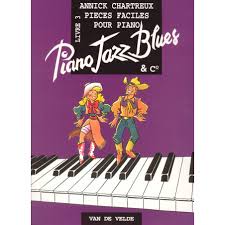 |
|
| Piano Keyboard Lesson Accelerate Your Keyboard Playing In Blues Rock And Funk Berklee Press |
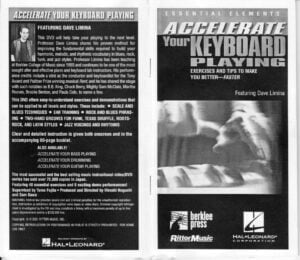 |
|
| Piano Klassiker |
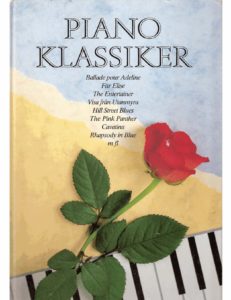 |
Piano Klassiker |
| Piano Klassiker Volume 2 |
 |
Piano Klassiker Volume 2 |
| Piano Lessons – Madame Bovary OST (Evgueni & Sacha Galperine) | ||
| Piano Lessons Book 1 Teacher’s Guide |
 |
|
| Piano Lessons Book 2 Student piano library |
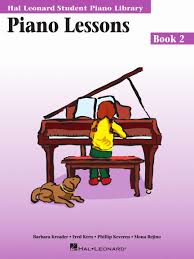 |
|
| Piano Lessons Level One Easy Solo for music lovers by Scott Hiltzik |
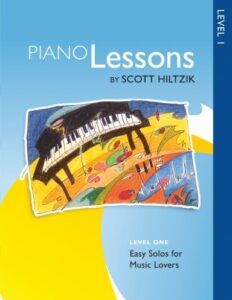 |
|
| Piano Lessons With Claudio Arrau Victoria A. Von Arx (Book) |
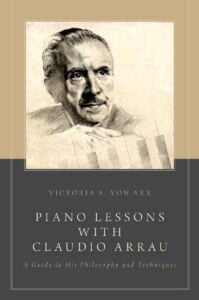 |
|
| Piano Level 1 Etudes Celebration Series (Royal Conservatory RCM) |
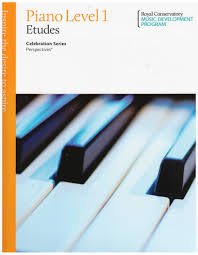 |
|
| Piano light Spirituals & Gospel |
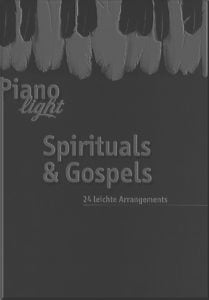 |
Piano light Spirituals & Gospel |
| Piano Literature Book 1 Piano Adventures Atlas Late Elementary The Periods Of Music History |
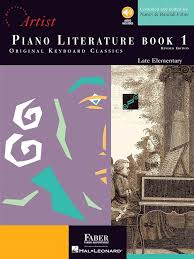 |
Piano Literature Book 1 Piano Adventures Atlas Late Elementary The Periods Of Music History |
| Piano Literature Book 2 Piano Adventures Atlas Early Intermediate The Periods Of Music History |
 |
Piano Literature Book 2 Intermediate |
| Piano Literature Book 3 Piano Adventures Atlas Intermediate The Periods Of Music History |
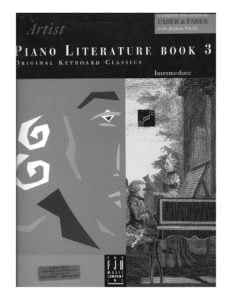 |
Piano Literature Book 3 Intermediate |
| Piano Literature Book 4 Developing Artist Original Keyboard Classics Late Intermediate Piano Adventures |
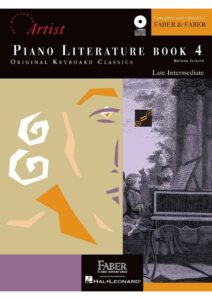 |
Piano Literature Book 4 Developing Artist Original Keyboard Classics Late Intermediate Piano Adventures |
| Piano Literature Volume 1 J S. Bastien |
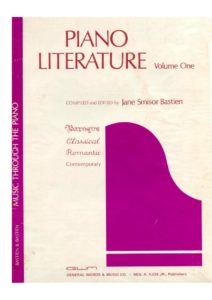 |
Piano Literature Volume 1 J S. Bastien |
| Piano Literature Volume 2 J S. Bastien |
 |
Piano Literature Volume 2 J S. Bastien |
| Piano Man – Billy Joel (Musescore File).mscz | ||
| Piano Masterpieces (Music Book) Text In Russian |
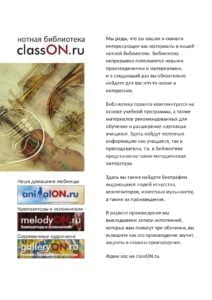 |
|
| Piano Mastery – Talks With Master Pianists And Teachers-Second Series (By Harriette Brower) (1917) |
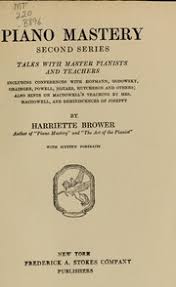 |
|
| Piano Notes The World Of The Pianist Charles Rosen (Book) |
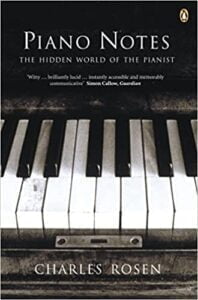 |
|
| Piano para Dummies Blake Neely Español Spanish |
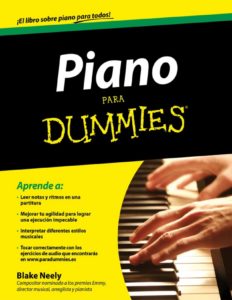 |
|
| Piano Pieces for Children over 100 selections progressively graded by Maxwell Eckstein |
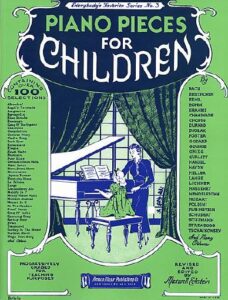 |
Piano Pieces for Children over 100 selections progressively graded by Maxwell Eckstein |
| Piano Playing – With Piano Questions Answered (By Josef Hofmann) (1920) |
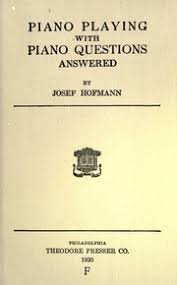 |
|
| PIANO Rare Masterpieces discovered for you by MICHAEL KORSTICK. Seltene Meisterwerke für Sie entdeckt |
 |
PIANO Rare Masterpieces discovered for you by MICHAEL KORSTICK. Seltene Meisterwerke für Sie entdeckt |
| Piano Roles A New History Of The Piano (- Book) 300 years of life with the piano (2002) by Jame Parakilas |
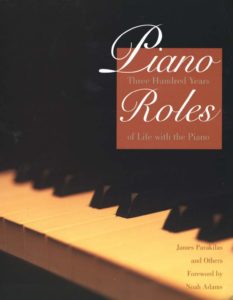 |
|
| Piano Scales Made Simple The Easy Guide To Playing Piano Scales (Piano Lessons For Beginner To Advanced Levels) (Mantius Cazaubon [Cazaubon, Mantius]) Sheet Music |
 |
Piano Scales Made Simple The Easy Guide To Playing Piano Scales (Piano Lessons For Beginner To Advanced Levels) (Mantius Cazaubon [Cazaubon, Mantius]) Sheet Music |
| Piano Scales, Chords, Arpeggios & Cadences – Alfred’s The Complete Book Of |
 |
|
| Piano Sight Reading Exercises Op. 45 Book III C. Schäfer |
 |
|
| Piano Solos 12 Advanced solos for the modern pianist Vol. 1 |
 |
Piano Solos 12 Advanced solos for the modern pianist Vol. 1 |
| Piano Solos 12 Advanced solos for the modern pianist Vol. 2 |
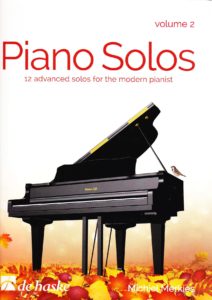 |
Piano Solos 12 Advanced solos for the modern pianist Vol. 2 |
| Piano Solos Book 3 |
 |
Piano Solos Book 3 |
| Piano Solos Film Music The Costume Drama Collection (Romantic Themes collection) |
 |
Piano Solos Film Music The Costume Drama Collection (Romantic Themes collection) |
| Piano Solos For Advent, Christmas Epiphany |
 |
Piano Solos For Advent, Christmas Epiphany |
| Piano Sonata Ix In A Major K 300 (331) W. A. Mozart (Incl. Turkish March) (Musescore File).mscz | ||
| Piano Sonata K 545 1st Mov. W.A. Mozart (Musescore File).mscz | ||
| Piano Sonata K 545 2nd Mov. W.A. Mozart (Musescore File).mscz | ||
| Piano Sonata K 545 3rd Mov. W.A. Mozart (Musescore File).mscz | ||
| Piano Sonata No 11 K 331 3rd Movement “rondo Alla Turca” (Musescore File).mscz | ||
| Piano Sonata No. 14 Moonlight 3rd Mov. Arranged For Electric Guitar (Musescore File).mscz | ||
| Piano Sonataop 49 No. 2 (Complete) (Musescore File).mscz | ||
| Piano Sonatinas Book 1 Early Intermediate |
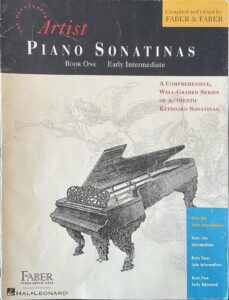 |
Piano Sonatinas Book 1 Early Intermediate |
| Piano Standards Phillip Keveren Series Easy Piano |
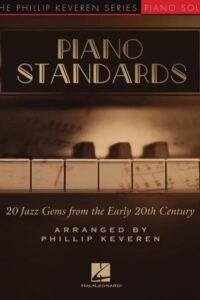 |
Piano Standards Phillip Keveren Series Easy Piano |
| Piano Studies Etudes Level 4 Celebration Series (Perspectives Royal Conservatory RCM) |
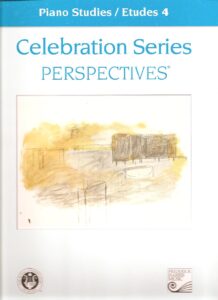 |
Piano Studies Etudes Level 4 Celebration Series (Perspectives Royal Conservatory) |
| Piano Styles Of 23 Pop Masters (Mark Harrison ) Secrets of the great contemporary players |
 |
Piano Styles Of 23 Pop Masters (Mark Harrison ) Secrets of the great contemporary players |
| Piano Summer Pleasures (Easy Pieces for Beginners) Allime Schottische S.P. Snow |
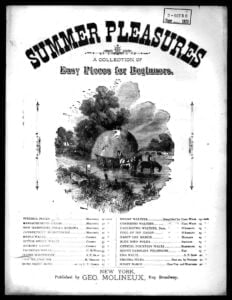 |
|
| Piano Syllabus 2015 edition The Royal Conservatory |
 |
|
| Piano Syllabus (2015) The Royal Conservatory |
 |
Piano Syllabus (2015) The Royal Conservatory |
| Piano Tranquility |
 |
Piano Tranquility – sheet music |
| Piano Travelin Fingers Book 2 |
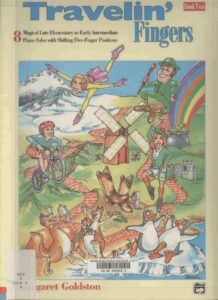 |
Piano Travelin Fingers Book 2 |
| Piano Tuning A Simple and Accurate Method for Amateurs (Book) by J. Cree Fischer |
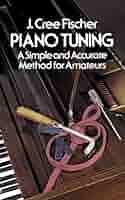 |
|
| Piano Very Easy Collection (piano solo) |
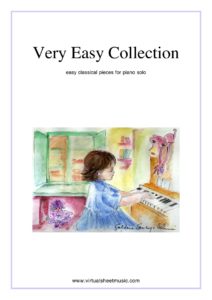 |
|
| Pianoforte Antologia di Successi – Vol.2 by Franco Concina |
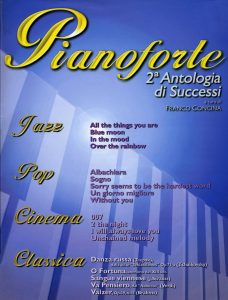 |
Pianoforte Antologia de Successi – Vol.2 |
| Pianoforte Music – Its History, With Biographical Sketches And Critical Estimates Of Its Greatest Masters By John Comfort Fillmore) (1883) |
 |
|
| Picture Chord Encyclopedia Photos Diagrams For Over 2,600 Guitar Chords |
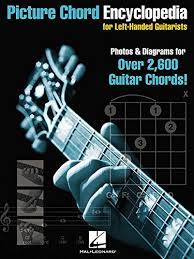 |
Picture Chord Encyclopedia Photos Diagrams For Over 2,600 Guitar Chords |
| Picture Chords The Encyclopedia Of For All Keyboardists Leonard Vogler |
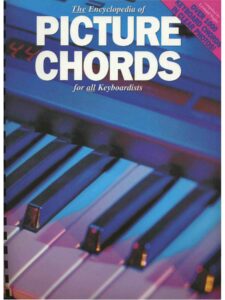 |
|
| Pie Jesu – Andrew Lloyd Webber | Andrew Lloyd Webber – Pie Jesu | |
| Pieczonka, A. – Tarantelle in A minor (sheet music) |
 |
|
| Pierre (Pooh) | ||
| Pierre Bachelet Songbook |
 |
Pierre Bachelet Songbook |
| Pierre Boulez 12 Notations For Piano | Pierre Boulez 12 Notations For Piano | |
| Pin Penin (Il Casanova di Federico Fellini) Nino Rota | ||
| Pink – Get The Party Started | ||
| Pink – God Is A Dj | ||
| Pink Floyd Ultimate Bass Play Along With Audio Mp3 |
 |
Pink Floyd – Ultimate Bass Play-Along |
| Pink Floyd Guitar Signature Licks A Stepbystep Breakdown Of David Gilmours Guitar Styles And Techniques (Pink Floyd [Floyd, Pink]) with TABs |
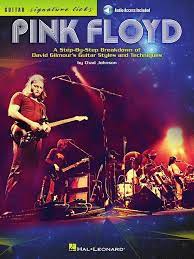 |
Pink Floyd Guitar Signature Licks A Stepbystep Breakdown Of David Gilmours Guitar Styles And Techniques (Pink Floyd [Floyd, Pink]) with TABs |
| Pink Floyd – Another Brick In The Wall | ||
| Pink Floyd – Anthology (Piano, vocal, Guitar chords) |
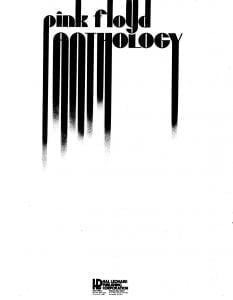 |
pink floyd sheet music |
| Pink Floyd – Comfortably Numb (Easy Piano Solo sheet music) | Pink Floyd – Comfortably Numb (Easy Piano Solo sheet music) | |
| Pink Floyd – Comfortably Numb (Piano) |
 |
|
| Pink Floyd – Comfortably Numb The Inside Story Of Pink Floyd Mark Blake (Book) |
 |
|
| PINK FLOYD – Dark Side Of The Moon Guitar Songbook with Tablature |
 |
PINK FLOYD – Dark Side Of The Moon Guitar Songbook |
| Pink Floyd – Shine On You Crazy Diamond | ||
| Pink Floyd – The division bell (guitar songbook) with Tablature |
 |
Pink Floyd – The division bell (guitar songbook) |
| Pink Floyd – The Great Gig in the Sky (Easy Piano Solo arr.) | Pink Floyd – The Great Gig in the Sky (Easy Piano Solo arr.) | |
| Pink Floyd – The Great Gig In The Sky (Piano Solo Arr.) (Musescore File).mscz | ||
| Pink Floyd – The Wall (Guitar Tab) |
 |
Pink Floyd – The Wall (Guitar Tab) |
| Pink Floyd – The Wall (Piano) |
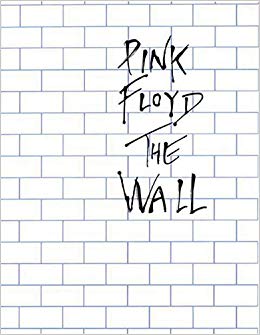 |
|
| Pink Floyd – Time Piano Solo |
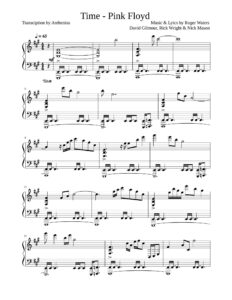 |
|
| Pink Floyd – Ultimate Keyboard Play-Along with MP3 audio tracks |
 |
Pink Floyd – Ultimate Keyboard Play-Along |
| Pink Floyd – Wish You Were Here Guitar Arr. (Musescore File).mscz | ||
| Pink Floyd – Wish You Were Here Guitar Arr. With Tabs |
 |
|
| Pink Floyd – Wish You Were Here Guitar Arr. With Tabs (Musescore File).mscz | ||
| Pink Floyd (The Dark Side Of The Moon) Guitar Rock Play Along Vol. 68 (PDF + MP3 audio tracks) with Tablature |
 |
Guitar Play-Along Volume 68 – Pink Floyd Pink_Floyd_Dark_Side_Of_The_Moon |
| Pink Floyd Acoustic Guitar Collection with Tablature |
 |
|
| Pink Floyd Album By Album (Popoff, Martin) Book |
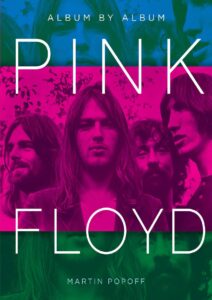 |
|
| Pink Floyd All the Songs The Story Behind by Guesdon, Jean-Michel Margotin, Philippe (Book) |
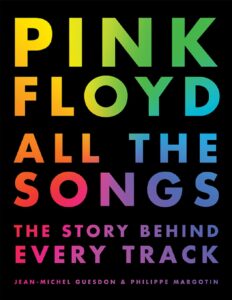 |
|
| Pink Floyd Animals Piano Vocal Chords Songbook |
 |
Pink Floyd Animals Piano Vocal Chords Songbook |
| Pink Floyd Back Stage A Momentary Lapse Of Reason (BOOK) Biography |
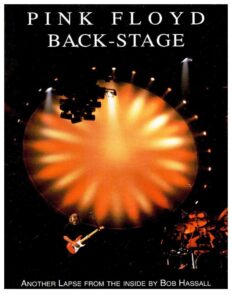 |
|
| Pink Floyd Classics (Pink Floyd) Guitar TABs Play Along with MP3 audio tracks download |
 |
Pink Floyd Classics (Pink Floyd) Guitar TABs Play Along with MP3 audio tracks download |
| Pink Floyd Early Classics – Guitar Signature Licks with MP3 audio Play Along with Tablature |
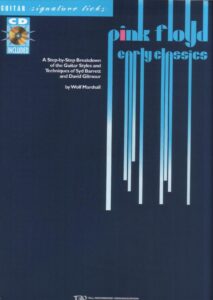 |
Pink Floyd Early Classics – Guitar Signature Licks with MP3 audio Play Along |
| Pink Floyd Guitar Chord Songbook Floyd Pink Sheet Music 30 songs |
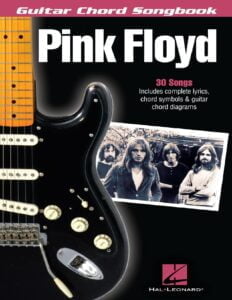 |
Pink Floyd Guitar Chord Songbook Floyd Pink Sheet Music |
| Pink Floyd Guitar Tab |
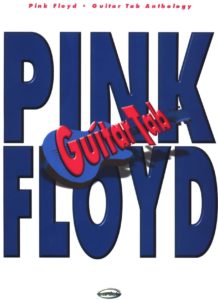 |
Pink Floyd Guitar Tab |
| PINK FLOYD Pigs Might Fly The Inside Story Of Pink Floyd By Mark Blake (Book) |
 |
|
| Pink Floyd Songbook – Pink Floyd (Easy Guitar with Riffs and Solos) with Tablature |
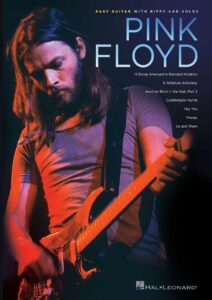 |
Pink Floyd Songbook – Pink Floyd (Easy Guitar with Riffs and Solos) |
| Pink Floyd The Final Cut Songbook |
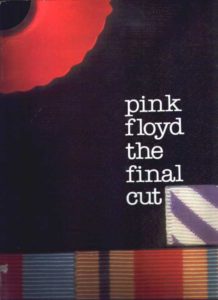 |
|
| Pink Floyd The Great Gig in the Sky | Pink Floyd The Great Gig in the Sky | |
| Pink Floyd The Pink Floyd Song Book (Guitar) |
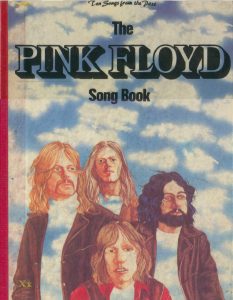 |
The Pink Floyd Song Book (Guitar)_compressed |
| Pink Floyd Wish You Were Here (Guitar Tablature edition songbook) |
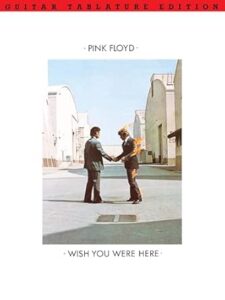 |
Pink Floyd Wish You Were Here (Guitar Tablature edition songbook) |
| Pink Floyd Wish You Were Here (piano vocal songbook) |
 |
Pink Floyd Wish You Where Here |
| Pink Greatest Hits So Far Piano Vocal Guitar |
 |
Pink Greatest Hits So Far Piano Vocal Guitar |
| Pink Martini – Lullaby |
 |
|
| Pink Panther – The Pink Panther Theme | ||
| Pink_Floyd Wish_You_Were_Here (Piano Solo) (Musescore file).mscz | Musescore File | |
| Pino Calvi – Accarezzame |
 |
|
| Pino Daniele Antologia Spartiti |
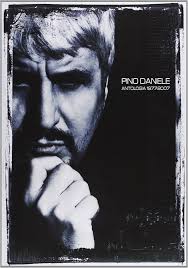 |
|
| Pinocchio – When You Wish Upon a Star (music from the film) Easy Piano Solo arr. sheet music | Pinocchio – When You Wish Upon a Star (music from the film) Easy Piano Solo arr. sheet music | |
| Pinocchio Fiorenzo Carpi Tema Di Geppetto Le Aventure Di Pinocchio |
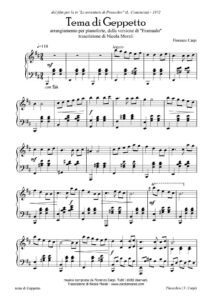 |
|
| Pinocchio sheet music soundtrack (Dario Marianelli) |
 |
|
| Pinocchio Theme |
 |
|
| Pinocchio, Le Canzoni Leigh Harline |
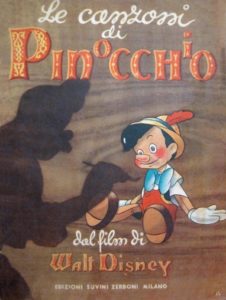 |
Pinocchio Le Canzoni Di – Leigh Harline |
| Piovani ”La vita e bella” (Life is beautiful) Screen Music, full score |
 |

